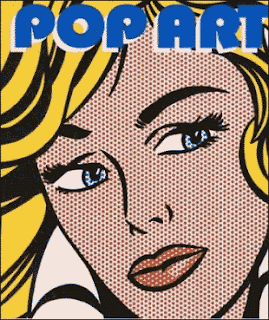Kinetic art explores how things look when they move and refers mostly to sculptured works, made up of parts designed to be set in motion by an internal mechanism or an external stimulus, such as light or air. The movement is not virtual or illusory, but a real movement that might be created by a motor, water, wind or even a button pushed by the viewer. Over time, kinetic art developed in response to an increasingly technological culture.
The Kinetic art form was pioneered by Marcel Duchamp, Naum Gabo, and Alexander Calder. Among the earliest attempts to incorporate movement in a plastic artwork were Moholy-Nagy's Space-Light Modulator, a sculpture producing moving shadows made at the Bauhaus between 1922 and 1930, certain Constructivists works, Marcel Duchamp's Rotary Glass Plate and Rotary Demisphere (Precision Optics), and Alexander Calder's motorized sculptures from 1930s.
The expression Kinetic Art was used from the mid-1950s onward. It referred to an international trend followed by artists such as Soto, Takis, Agam and Schoffer. Some Kinetic artists also worked in the field of Op Art. Their works were influenced by a modernist aesthetic and could be made with contemporary materials (e.g., aluminum, plastic, neon). Most kinetic works were moving geometric compositions. In Italy artists belonging to Gruppo N, founded in Padua in 1959 (including Biasi, Costa and Massironi, among others), carried out experiments with light, projections and reflections associated with movement.
Kinetic sculptures are examples of kinetic art in the form of sculpture or three dimensions. In common with other types of kinetic art, kinetic sculptures have parts that move or that are in motion. Sound sculpture can also, in some cases, be considered kinetic sculpture. The motion of the work can be provided in many ways: mechanically through electricity, steam or clockwork; by utilizing natural phenomena such as wind or wave power; or by relying on the spectator to provide the motion, by doing something such as cranking a handle.
Bicycle Wheel (1913) by Marcel Duchamp, is said to be the first kinetic sculpture. Besides being an example of kinetic art it is also an example of areadymade, a type of art of which Marcel Duchamp made a number of varieties throughout his life. In Moscow in 1920, kinetic art was recorded by the sculptors Naum Gabo and Antoine Pevsner in their Realist Manifesto, issued as part of a manifesto of constructivism.
László Moholy-Nagy (1895-1946), a member of the Bauhaus, and influenced by constructivism can be regarded as one of the fathers of Lumino kinetic art. Light sculpture and moving sculpture are the components of his Light-Space Modulator (1922–30), One of the first Light art pieces which also combines kinetic art.
Kinetic drawing makes use of the critical balance and creates 3D drawings from various materials. Kinetic means that the object holds energy, kinetic drawings usually are critical in their stability and are eager to find a more stable position, through gravity. From there they are built up again, better and stronger and with a repetition of this process a beauty of its own starts to grow by natural forces.
A variation of kinetic art in the realm of painting is ModulArt, where smaller modular elements allow a larger painting to be in flux, though not continuously but at the will of its creator, owner, or user. However, the painting stays is motion, offering alternative views and alternative interpretations.
Bicycle Wheel is a readymade by Marcel Duchamp consisting of a bicycle fork with front wheel mounted upside-down on a wooden stool.
In 1913 at his Paris studio he mounted the bicycle wheel upside down onto a stool, spinning it occasionally just to watch it. Later he denied that its creation was purposeful, though it has come to be known as the first of his readymades. "I enjoyed looking at it," he said. "Just as I enjoy looking at the flames dancing in the fireplace." It was not until he began making readymades a few years later in New York that he decided Bicycle Wheel was a readymade.
The original from 1913 was lost, and Duchamp recreated the sculpture in 1951.
Bicycle Wheel is said to be the first kinetic sculpture.






.jpg)













